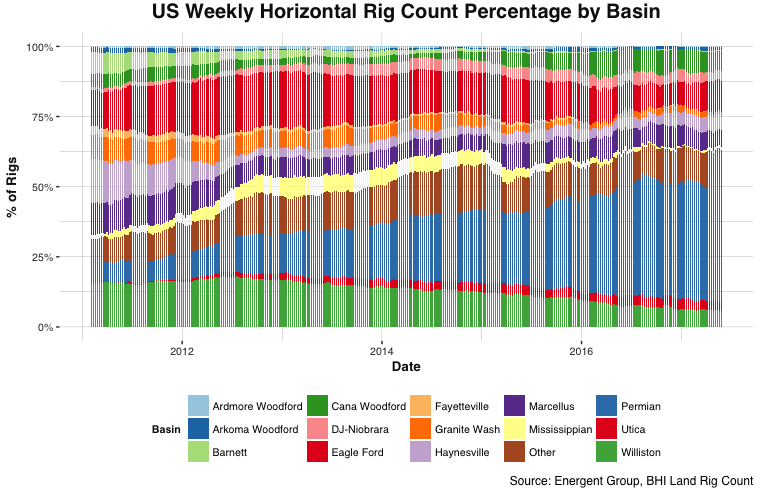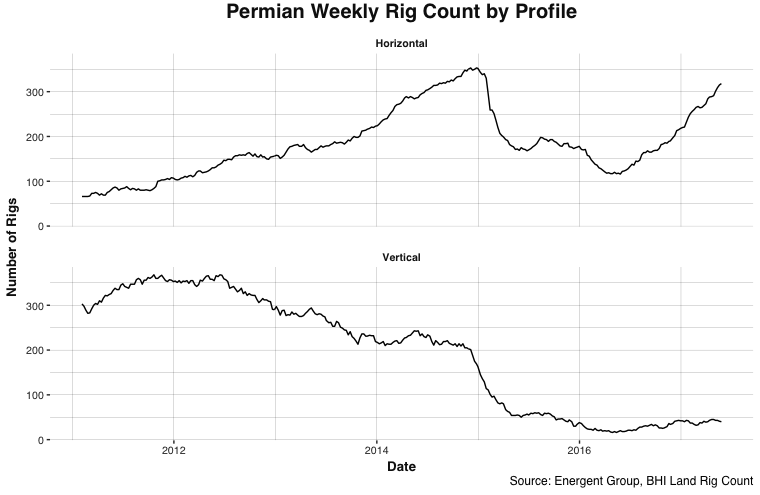Since 2012, the percantage of horizontal rigs running in the Permian Basin has steadily increased. The percent of horizontal rigs in the Permian grew from 14% in January 2013 to 27% in January 2015. Now, the Permian accounts for over 42% of the active horizontal rigs in the US land market.

This year the Permian gained 100 horizontal rigs, a 46% increase in horizontally directed rigs. The year-over-year horizontal rig increase is a staggering 174% for the prolific basin. At this time last year, there were only 118 horizontal rigs active, yet the percentage of horizontal rigs continued to increase. Today, there are 318 active horizontal Permian rigs compared to the peak of 353 horizontal rigs at the end of 2014.
 US pressure pumpers make moves
US pressure pumpers make moves
As the market recovered, pressure pumpers across the US made strategic acquisitions, filed for IPO’s, and partnered with former competitors to gain market share and regional presence in the Permian. Schlumberger (NYSE: SLB) partnered with Weatherford (NYSE: WFT) to create OneStim, a pure-play hydraulic fracturing business serving North America.
FTSI intends to IPO on the NYSE as FTSI. As of January 2017, the company operates 32 frac fleets with a diverse customer base across the Permian, Eagle Ford, and SCOOP/STACK. Patterson-UTI (NYSE: PTEN) acquired 77 Energy’s Performance Technologies frac fleet bringing their total HHP to 1.5 million. Keane (NYSE: FRAC) acquired Rockpile adding 245,000 HHP, 8 wireline trucks, 12 workover rigs, and 10 cement units. ProPetro (NYSE: PUMP) is a pure-play pressure pumper focused, right now, only on the Permian. Liberty Oilfield Services filed for IPO and plans to list on NYSE under the ticker symbol BDFC.
Does history repeat itself? The increase in horizontal rigs shows E&P’s concentration on Permian drilling. E&P’s are citing a shortage of hydraulic horsepower in the Delaware and Midland Basins. Pressure pumpers are reactivating and building new fracturing fleets. This appears similar to the market of 2012 and 2013 when companies aggessively added hydraulic horsepower to meet customer demands.
However, the growth cycle ended abruptly at the end of 2014 initiating the demise of several pressure pumpers including C&J Services (OTC: CJES), Trican, Sanjel, and many smaller pressure pumping companies.
Only time – or maybe commodity prices – will tell.




